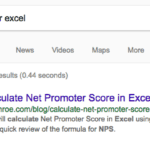This blog will look into the different types of content types a business can use in inbound marketing and tackle this very concern.
Sharing experience doesn’t mean giving it away
The most commonly used types of content marketing are listed below. All of them have one thing in common: they share your knowledge with the world.
Most B2B businesses hold knowledge as one of their most important assets and giving it away to prospects may seem scary, but it need not be that way.
The fact is, when you write a good piece of content, you don’t want to make it too long or too short. Between 900 and 2000 words for a regular blog post and up to 3000 words for a pillar post seems to make Google happy.
The amount of detail you go into is important for two reasons. The first is that if you make a blog post about a complex topic too long and focus too much on little details, it will get boring and no one will want to read it. The exception lies in simpler and smaller topics where technical details can be used to demonstrate technical expertise.
Secondly, you don’t want to give away the really technical stuff that only you can do
And professionals in your field are your competitors not your target audience.
There’s a grey area where the knowledge you give away is explained well enough that some people with a problem in your business area will decide to solve their problem themselves. These people aren’t prospects because they are searching Google for a DIY solution: they were never going to hire you anyway.
One of two things will happen in this scenario.
Scenario One: They will solve the problem themselves
They will solve the problem themselves, and potentially keep returning to your website because it is a good source of valued information. They are then more likely to share this content with people within their spheres of influence when they have similar problems.
Scenario Two: Attempt to solve the problem and fail
They will attempt to solve the problem and fail to, possibly causing their problem to grow. They will then contact you to either complain about the problem or just realise that they are out of their depth and contact you for a resolution. Either way, if they contact you, it’s an opportunity.
Use Content Repurposing To Maximise Reach and Efficiency
Content repurposing is a strategic approach to recycle your existing content into various formats to extend its reach and enhance marketing efficiency.
For instance, a webinar packed with insights can be transformed into a series of blog posts, each highlighting key takeaways or discussions. Similarly, converting a webinar into an infographic can visually summarise the main points, making it easily shareable and digestible.
This not only gives your content a fresh lease of life but also caters to different audience preferences. It maximises the utility of your original content and also improves SEO through diverse content formats and increases engagement by appealing to different learning styles.
Content Types
Blogs
Blogs are the gateway to all other types of content because strategic blog publication is the best way to be seen on Google.
So when writing blogs, ensure you build yourself a keyword plan using a reputable SEO tool such as Moz or SEMRush. This will put you on a path to search visibility in an area that aligns with your marketing goals.
To build a good blogging structure, you’ll need a centralised blog post within your topic called the pillar post. This post is typically quite long (over 1500 words). The pillar post contains information about the entire topic.
You then write a series of shorter blogs that are all related to pillar post, ensuring that they are linked back to the centralised post from their first paragraphs.
How to write a blog is a pretty large topic in itself. You can read about in greater detail in 7 Simple Steps for Technical Blogging that Rank.
Whitepapers
Whitepapers are more technical in content compared to everything else
If you have important technical information or a USP (Unique Selling Proposition) you are keen to share about your products and/or services, then here’s the best place to talk about it greater detail.
Webinars
Webinars are often seen by prospects as a product in itself. A free class where you can learn about solutions in your problem areas. So make sure you do just that. Market free webinars to prospects at the consideration stage who have clear problems that you can solve.
Webinars are a great opportunity for B2B businesses selling services to push their prospects through the marketing funnel from consideration into the decision stage.
When inviting people to your webinar first identify your target audience. LinkedIn is a great option here. Then gather their contact information. Make sure you use an email verifier so the details are accurate.
Webinar attendees are fair game. Contact them directly during and after the webinar with personal emails and invitations to discuss their issues with you. The best ones to contact are those who participated during the webinar with questions and comments.
A good way to test engagement during a webinar is to hold a poll. Asking a question about the most common problem amongst the attendees will show who is engaged. The right polling questions can also help you learn more about your prospects problems.
Some other top webinar tips include setting aside a quiet and distraction-free space for the event, ensuring that you have a strong and stable internet connection, and making sure to have any necessary materials or documents on hand.
Here are a couple of webinar examples from our own site:
- Practical Survey Analysis in Excel [On-Demand Webinar]
- Using Customer Feedback To Grow Sales [On-Demand Webinar]
Downloadable Checklists
People love downloadable checklists because they are brief, practical, and user-friendly.
From a marketing viewpoint, they are also straightforward and quick to create, making them a great option for service-oriented businesses.
Checklists serve as invaluable resources, guiding potential customers through processes or helping them to evaluate options, thereby reinforcing the service provider’s expertise and value proposition.
Downloadable E-books
E-books tend to give away the most value and detail out of everything in the list.
As gated content they compel prospects with the idea of high value, high volume information. Don’t feel intimidated though, e-books don’t have to be long, just useful. They also present a great opportunity to:
- market your brand
- show your prospects how you do business
- show your prospects how valuable your knowledge can be to them
Many businesses make the mistake of leaving E-books hanging. For example, filling them with lots of marketing and then not actually providing what the title of the ebook is supposed to offer.
Make sure that you give your prospects exactly what your ebook titles says it will. If you don’t, your business will earn itself a reputation of being dishonest and manipulative.
Here are a couple of examples from our own site:
- The Definitive Guide to Maximising Your Survey Response Rate
- Ultimate Service Recovery Implementation Guide
Infographics
Infographics are multiple purpose, they can be used on their own to easily communicate a complex subject. They can also be used to compliment information in a blog, and lastly they can be used as gated content.
There are a few websites that provide you with the tools to easily create free infographics like Canva.
As with every other kind of content, you need to make sure that the content makes sense and provides valuable information to your prospects. Useful infographics tend to be shared quite readily available on social media because they can be read and understood quite quickly and they also look attractive.





